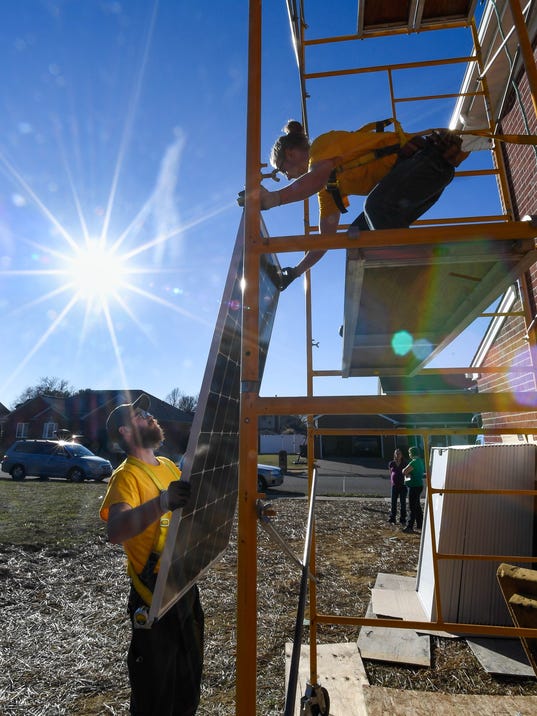Bill seeks to drastically reduce value of privately produced solar power
Local solar energy users are facing off against big utility companies this month over a proposed law that would drastically reduce the value of privately generated solar power in Indiana.
Senate Bill 309's supporters say solar users are overpaid for their power, and the bill sets a fairer price.
“People think this bill is anti-solar, and that’s just not true,” said Chase Kelley, a spokeswoman for Vectren.
But, critics fear the move could destroy Indiana’s budding solar industry.
“I’m very concerned for what affect this will have on the solar industry,” said Susan Sirnic, the leader of the Green Team at Bethlehem United Church of Christ, which recently installed a solar system on its church. “It would make it hard to recover your investment.”
Under current state law, utility companies are required to participate in an energy swap with solar users.
The process is called net metering. Solar users take electricity from the grid when their systems don’t produce enough energy to power their homes. But, when the panels produce more energy than the homes need, the excess power is sold back to the grid.
By law, utility companies must pay solar users the full retail price for that power.
“Right now, all we’re doing is swapping kilowatt hours for kilowatt hours,” Sirnic said. “We receive the same retail rate that we pay.”
The problem, utility companies say, is the power is not worth that much.
“The retail rate includes more than the cost of the energy,” said Mark Massel, the president of the Indiana Energy Association, which is working to get the law passed. “It includes the cost to maintain the grid.”
About 30 percent of the retail price covers the cost of the electricity, Kelley said. The other 70 percent covers grid maintenance, customer service, meter reading, billing and energy efficiency programs.
When Indiana first established net metering in 2005, the system was designed to promote – and subsidize – solar users, Kelley said. Solar panels can cost a home owner tens of thousands of dollars to install, and it takes years for solar users to earn back their investments on the systems. Paying users retail rate for their power helped them earn that investment back quicker.
“It was always meant to be a subsidy,” Kelley said.
And it’s time for the state to lower that subsidy, she added. The cost of solar systems has dropped in the last decade since the state first introduced net metering.
More people are investing in solar systems, and the money they save through net metering is being passed to customers who don’t have personal solar power, Kelley said.
“There are a lot of people who can’t afford to invest in solar,” Kelley said. “They shouldn’t be forced to pay for people who do invest in solar.”
The bill’s opponent’s counter that the cost being deferred to non-solar customers is negligible, a few cents a month. Furthermore, they argue, there is a social and societal benefit to solar electricity.
Local solar installers are calling for the state to postpone changes to net metering laws long enough for an independent group to study the true cost and value of solar power to utility companies in Indiana. [emphasis added]
“There have been studies done in other states that show that the value of solar power is close to the retail rate,” said Ryan Zaricki, the president of Whole Sun Designs, an Evansville based solar system installing company. “It is so frustrating that (lawmakers) are so adamantly against a study. When they pull these numbers out, I keep saying, show me the study.”
If Senate Bill 309 passes, utility companies would be allowed to gradually reduce the rate that they pay solar users for their power to closer to the market rate for raw power.
The bill before the Senate this week, stipulates that anyone who installs solar systems before June 30 will receive the retail rate for the solar power they produce – for the next 30 years. After June 30, the bill allows utilities to gradually reduce the rate they pay.
“There is going to be an onslaught of people getting solar systems installed before that June 30 deadline,” Zaricki said. “We’re going to see a boom, and then it’s going to fall off. They call it the solar coaster.”



